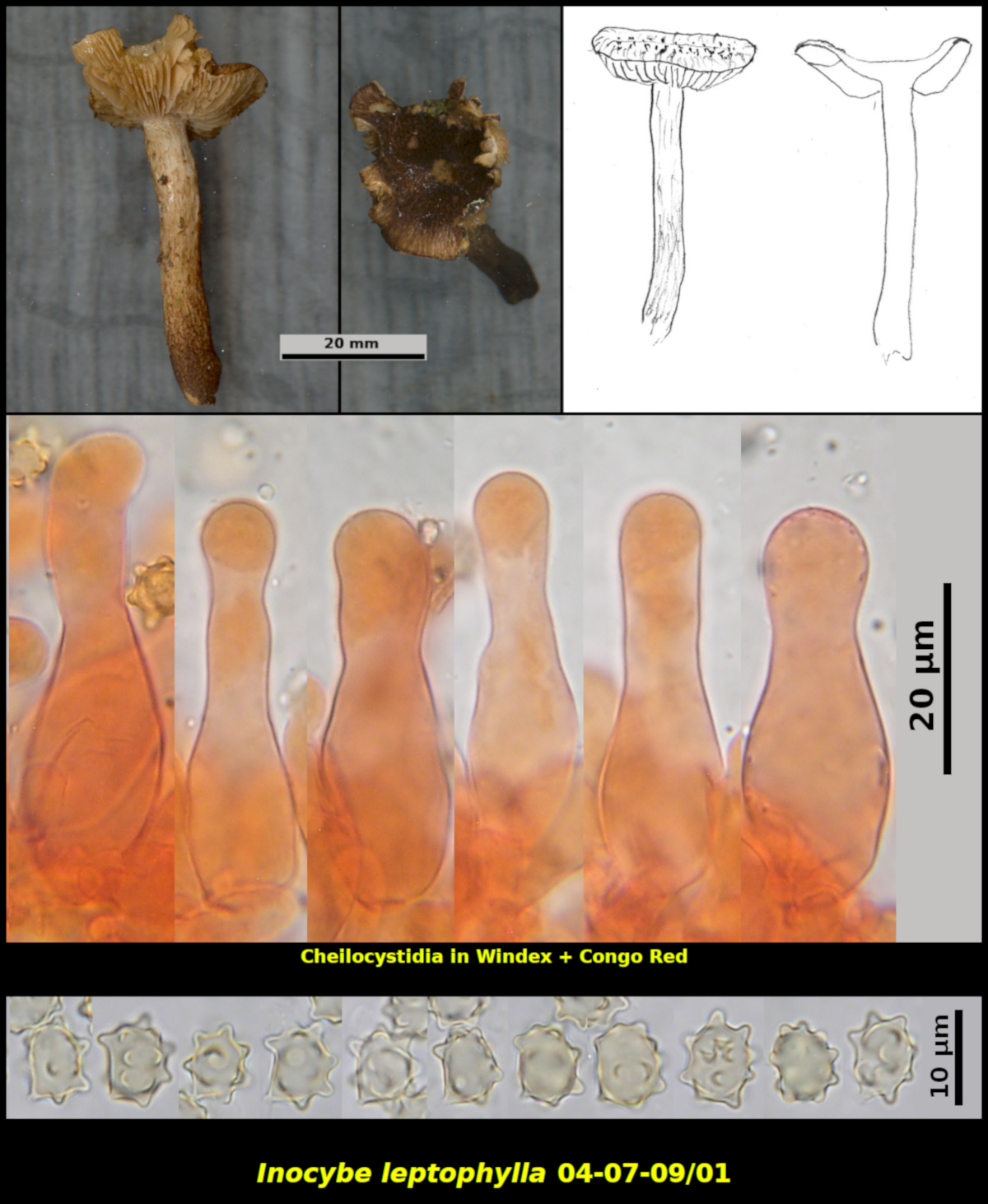Fleshy Fungi of New Brunswick >>
Inocybe leptophylla
Inocybe leptophylla G.F. Atk.

Solitary on highly decayed and moss-covered stump of Abies balsamea in woods dominated by Abies balsamea and Betula cordifolia, Little Lepreau, New Brunswick (04-07-09/01).
Pileus not seen when young, plano-convex and with an uplifted margin, dry, densely squarrose-scaly in the central 2/3, with scales becoming more appressed and fibrillose toward the margin, Reddish brown (Methuen 8F4-5) in the area of the squarrose scales, reaveling a Brownish orange (7C3) ground colour near the margin where the fibrils have separated, about 30 mm in diameter. Stipe equal, dry, fibrillose to subtomentose throughout, white-pruinose at the apical 2-3 mm, with an Orange white (5A2) ground colour in the upper 2/3, with fibrils concolourous with those of the pileus and dominating the colour of the lower 1/3, broken at the base but probably not bulbous, 45 X 5 mm. Lamellae not seen when young but probably Orange grey (5B2) at first, later darkening to Brownish orange (5C3), subclose, adnexed, not marginate. Flesh Greyish yellow to Olive brown (4CD3) in the pileus, Yellowish white (4A2) to nearly white in the stipe, with a pleasant but slight mushroom odour.
Basidiospores orange (HSV40:50:100) in spore print, ellipsoidal strongly and conspicuously nodulose with >15 narrow nodules, 8.0-10.5 x 6.3-8.5 μm, Q = 1.01-1.38 (average[25]: 9.0 x 7.5 μm, Q = 1.20). Cheilocystidia abundant and forming a continuous sterile margin, ventricose to lageniform, with apical crystals as viewed in Melzer’s Solution, thin-walled, 33-49 x 11.4-18.0 μm. Pleurocystidia lacking.
Inocybe teraturgus is one of several species having a cap with upright (squarrose) scales and nodulose basidiospores. There are four other members of this group, distinguishable by the key provided in the page discussing I. stellatospora
Inocybe leptophylla is unique among the species of Inocybe in having nodulose basidiospores and squarrose-scaly caps and in completely lacking pleurocystidia. It's rather large basidiospores, sometimes more than 10 μm long, have more nodules than most other species in the genus. It is known from New Brunswick by two collections, one from Kouchibouguac National Park and Collection 04-07-09/01 from Little Lepreau. This collection was not in very good condtion when collected and was not photographed in the field. Nevertheless, because it has not been collected here very often we have included these rather poor scans as a record.
It may be surprising to find an ectomycorrhizal basidiomycete like I. leptophylla growing on wood, but that is where it is usually reported. Usually the wood has been highly rotted by other fungi and is probably depleated nutritionally. It may be specialized in metabolizing nutrients found in this challenging environment, thus allowing the roots of its mycorrhizal partners to exist there.
Scans and field sketch: D. Malloch (04-07-09/01).